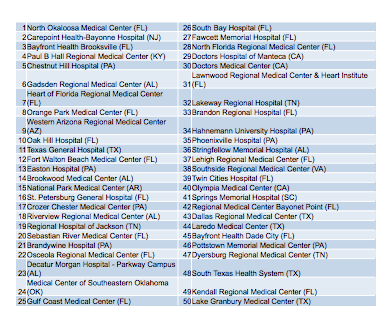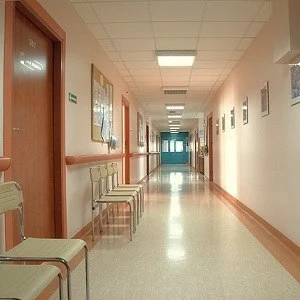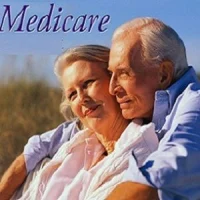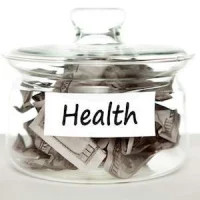A study published in Health Affairs lists the 50 hospitals in the United States that mark up treatments by more than 10 times the costs allowed by Medicare — a markup of more than 1,000 percent for the same medical services.
The findings show that the combination of a lack of regulation of hospital charges in the U.S. and no market competition is leading to price-gouging that trickles down to nearly all consumers, whether they have health insurance or not, and plays a role in the rise of overall health spending.
The authors, Gerard F. Anderson of the Johns Hopkins Bloomberg School of Public Health, and Ge Bai of Washington & Lee University, analysed the 2012 Medicare cost reports from the Centers for Medicare and Medicaid Services to determine a charge-to-cost ratio, an indicator of how much hospitals are marking up charges beyond what Medicare agrees to pay for those with its government-subsidised health insurance.
They found that the 50 hospitals charged an average of more than 10 times the Medicare-allowed costs. They also found that the typical U.S. hospital charges were on average 3.4 times the Medicare-allowable cost in 2012. In other words, when the hospital incurs $100 of Medicare-allowable costs, the hospital charges $340. In one of the top 50 hospitals, that means a $1,000 charge.
“There is no justification for these outrageous rates but no one tells hospitals they can’t charge them,” says Anderson, a professor in the Bloomberg School’s Department of Health Policy and Management. “For the most part, there is no regulation of hospital rates and there are no market forces that force hospitals to lower their rates. They charge these prices simply because they can.”
Of the 50 hospitals with the highest price markups, 49 are for-profit hospitals and 46 are owned by for-profit health systems. One for-profit health system, Community Health Systems, Inc., operates 25 of the 50 hospitals. Hospital Corporation of America operates more than one-quarter of them. While they are located in many states, 20 of the hospitals are in Florida.
“For-profit hospitals appear to be better players in this price-gouging game,” says Bai, an assistant professor of accounting at Washington & Lee University. “They represent only 30 percent of hospitals in the U.S., but account for 98 percent of the 50 hospitals with highest markups."
Many hospital patients do not actually pay the “charge master” or full price. Along with government insurers, most private health insurers negotiate lower rates for their patients.
However, 30 million uninsured Americans are likely to be charged the full rate, as are patients receiving out-of-network care and those receiving workers’ compensation or auto insurance benefits. As a result, uninsured patients, who are often the most vulnerable, face exceptionally high medical bills, often leading to personal bankruptcy, damaged credit scores or avoiding needed medical services.

Source: Johns Hopkins Bloomberg School of Public Health
Image credit: Pixabay
The findings show that the combination of a lack of regulation of hospital charges in the U.S. and no market competition is leading to price-gouging that trickles down to nearly all consumers, whether they have health insurance or not, and plays a role in the rise of overall health spending.
The authors, Gerard F. Anderson of the Johns Hopkins Bloomberg School of Public Health, and Ge Bai of Washington & Lee University, analysed the 2012 Medicare cost reports from the Centers for Medicare and Medicaid Services to determine a charge-to-cost ratio, an indicator of how much hospitals are marking up charges beyond what Medicare agrees to pay for those with its government-subsidised health insurance.
They found that the 50 hospitals charged an average of more than 10 times the Medicare-allowed costs. They also found that the typical U.S. hospital charges were on average 3.4 times the Medicare-allowable cost in 2012. In other words, when the hospital incurs $100 of Medicare-allowable costs, the hospital charges $340. In one of the top 50 hospitals, that means a $1,000 charge.
“There is no justification for these outrageous rates but no one tells hospitals they can’t charge them,” says Anderson, a professor in the Bloomberg School’s Department of Health Policy and Management. “For the most part, there is no regulation of hospital rates and there are no market forces that force hospitals to lower their rates. They charge these prices simply because they can.”
Of the 50 hospitals with the highest price markups, 49 are for-profit hospitals and 46 are owned by for-profit health systems. One for-profit health system, Community Health Systems, Inc., operates 25 of the 50 hospitals. Hospital Corporation of America operates more than one-quarter of them. While they are located in many states, 20 of the hospitals are in Florida.
“For-profit hospitals appear to be better players in this price-gouging game,” says Bai, an assistant professor of accounting at Washington & Lee University. “They represent only 30 percent of hospitals in the U.S., but account for 98 percent of the 50 hospitals with highest markups."
Many hospital patients do not actually pay the “charge master” or full price. Along with government insurers, most private health insurers negotiate lower rates for their patients.
However, 30 million uninsured Americans are likely to be charged the full rate, as are patients receiving out-of-network care and those receiving workers’ compensation or auto insurance benefits. As a result, uninsured patients, who are often the most vulnerable, face exceptionally high medical bills, often leading to personal bankruptcy, damaged credit scores or avoiding needed medical services.

Image credit: Pixabay
References:
Bai G and Anderson GF (2015) Extreme Markup: The Fifty US Hospitals With The Highest Charge-To-Cost Ratios. Health Affairs June 2015 doi:
10.1377/hlthaff.2014.1414
Latest Articles
healthmanagement, hospital prices, price gouging, medicare, health insurance
A study published in Health Affairs lists the 50 hospitals in the United States that mark up treatments by more than 10 times the costs allowed by Medicare.










